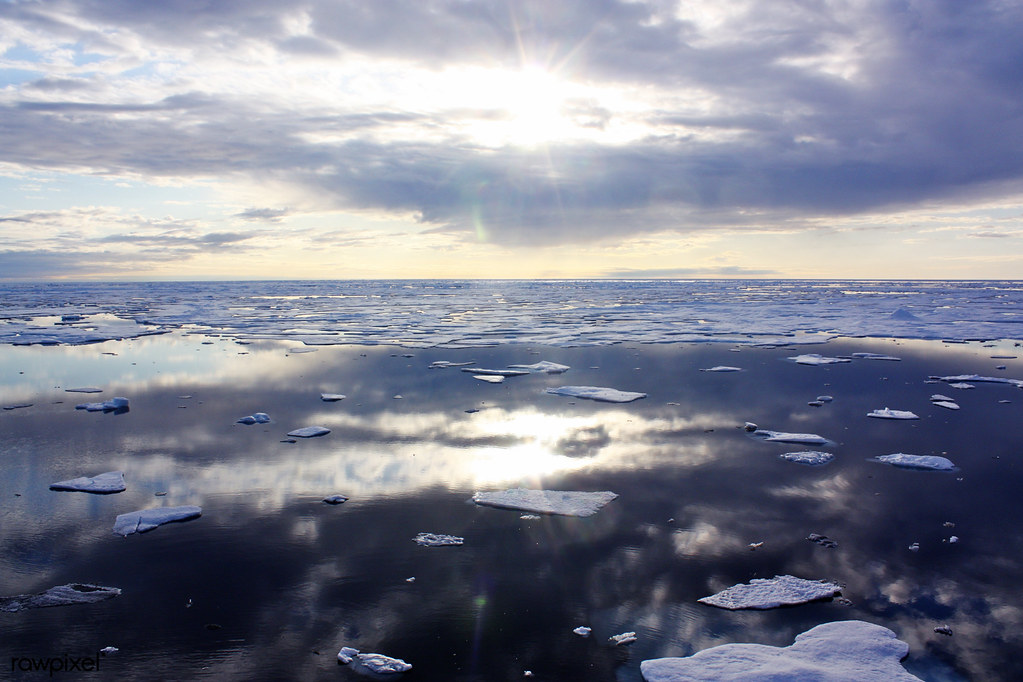Paper: Freshening of the western Arctic negates anthropogenic carbon uptake potential
Authors: R.J. Woosley and F.J. Millero
Journal: Limnology and Oceanography
As human generated emissions of carbon dioxide continue to increase, scientists seek to understand the potential for ‘sinks’, or places that the excess CO2 can move in the global carbon cycle, to take up and store some of the increased emissions. Understanding how these carbon sinks may react to increasing global emissions helps to better predict both the rate of atmospheric increase in the future and the potential response of global ecosystems, including major sinks in forests and oceans.
Oceans are understood to be a critical part of the global carbon cycle; they can hold dissolved carbon dioxide in their waters and marine organisms take up carbon dioxide through photosynthesis and production of calcite shells. One of the key factors in the ocean’s potential for carbon uptake is high total alkalinity, or resistance to the decrease in pH otherwise caused by increasing carbon dioxide concentrations.
Over the past several decades, the Arctic Ocean and it’s surroundings have been warming, leading to complex hypotheses about changes in CO2 uptake as ocean waters warm, sea ice melts, and increased melt of land-based ice leads to higher volumes of river run-off. Warmer waters in general can hold less carbon dioxide than cold water, which should tend to decrease uptake of carbon dioxide into the future; but, sea ice cover has also been decreasing. Decreased ice cover allows for greater surface area available to interact with the atmosphere which should increase carbon uptake during the ice-free summer months. Summer biological production in the Arctic is short-lived, but intense, helping to increase the difference between CO2 at the ocean surface and the atmosphere above – this helps to further facilitate exchange into the water.
Most measurements and hypotheses about carbon exchange in the Arctic Ocean have proposed that the increased surface area of the water as the ice melts, combined with the still relatively cold water and high alkalinity, would allow the Arctic Ocean to take up a significant amount of atmospheric CO2, allowing the Arctic Ocean to act as a significant global ‘sink’. The data to support this idea has largely been collected from repeated summer measurements in small areas continental shelf that are most accessible to research vessels. However, the Arctic Ocean is complex, with multiple small basins divided by ridges.
A recent study suggests that past models of Arctic Ocean carbon uptake have failed to account for the complexities of biological production across the full ocean as well as the impact of increased freshwater flow from rivers as glaciers melt on land. The study, published in 2020, used data from three surveys that made more complete transects of the Arctic Ocean basin, spaced ten years apart, to compare changes in ocean chemistry that can offer more clues to the likely changes in carbon uptake in the ocean and it’s relationship to increasing carbon dioxide in the atmosphere. The research found that the increasing volume of freshwater river input is leading to a significant dilution of total alkalinity in many areas of the Arctic Ocean. While past research has tried to model this input, models may have overestimated the increased contribution to total alkalinity in the run-off, and underestimated the over impact of dilution by the freshwater. The observations offered by this study indicate that increased freshwater flows wills significantly reduce total alkalinity and thereby reduce the amount of carbon dioxide that can be absorbed into the future and decreases the impact of the Arctic Ocean as a potential sink for CO2. This would be a major change the way scientists think about and model the carbon storage of the ocean.
The role of carbon in a changing Arctic by Avery Shinneman is licensed under a Creative Commons Attribution-ShareAlike 4.0 International License.

